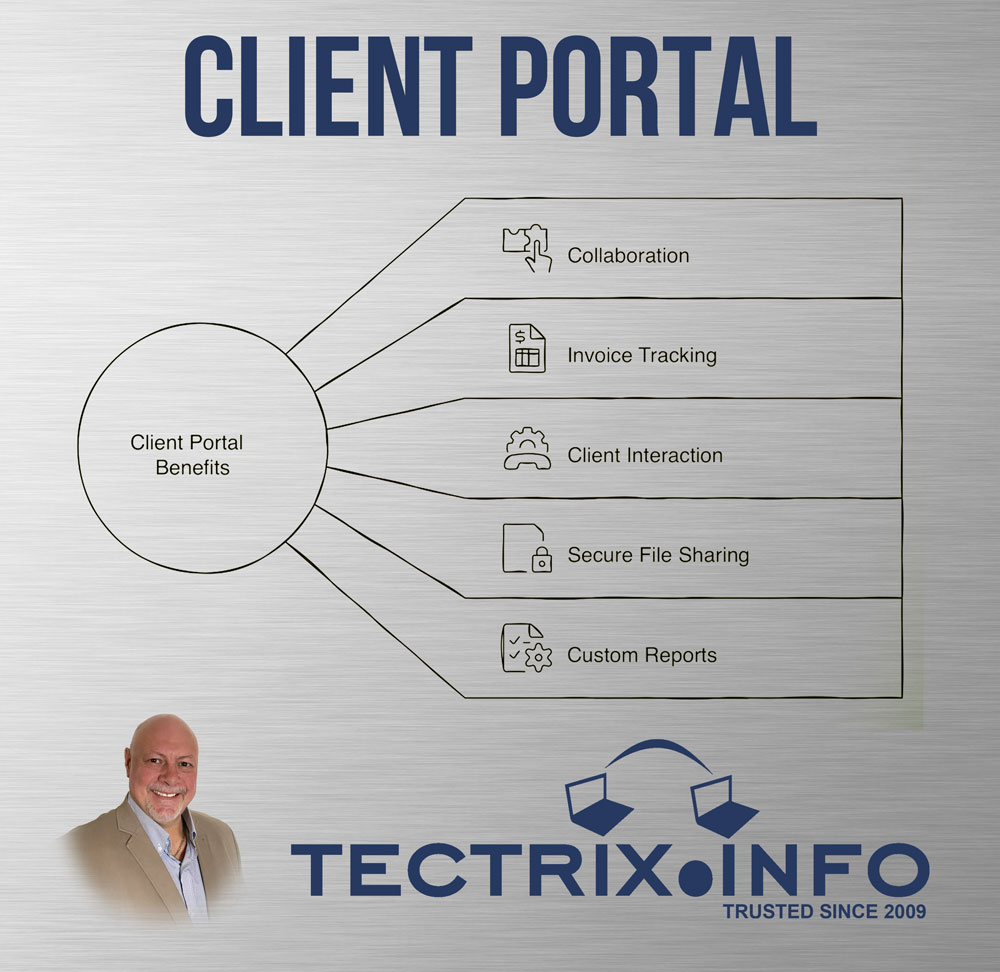In today’s fast-paced digital world, clients demand transparency and timely updates regarding the projects they entrust to businesses. Whether you’re a freelancer, a small business, or a large agency, incorporating a client portal into your website can have a transformative effect on client relations and satisfaction. But what exactly is a client portal, and how can it enhance project progress visibility while keeping clients happy? Let’s dive in!
What is a Client Portal?
A client portal is a secure, online platform where clients can log in to view information related to their specific projects or accounts. It serves as a personalized dashboard that gives clients access to key details such as project timelines, milestones, budget tracking, progress reports, and communication records. It’s a convenient way to centralize all project information, making it easily accessible in one location.
For businesses, a client portal is not just a tool for sharing data—it’s a space that fosters communication, builds trust, and strengthens relationships. The act of regularly updating clients through this portal keeps them engaged and informed, which is a surefire way to enhance client satisfaction.
How a Client Portal Boosts Transparency and Trust
Transparency is crucial in building strong, lasting client relationships. By offering clients access to a portal where they can see real-time progress, your business is signaling that you have nothing to hide. Instead of waiting for scheduled meetings or sporadic emails, clients can check in whenever they need updates.
Real-Time Progress Tracking
With a client portal, project progress is updated live, allowing clients to track how things are unfolding. This feature eliminates the guesswork and provides clients with a visual timeline that clearly shows the status of different tasks or milestones. The peace of mind that comes with knowing exactly where things stand can lead to an increased sense of trust.
Clear Milestone and Deadline Tracking
Clients no longer have to wonder if a project will be finished on time. With a built-in calendar or task list, clients can see exactly when key project milestones are expected to be met. If there are any changes in the timeline or scope, clients are notified immediately. This proactive approach ensures that there are no surprises and reduces the chances of miscommunication.
Instant Access to Key Documents and Files
Instead of dealing with email attachments or physical copies of documents, clients can access all necessary files through the portal. From contracts and invoices to project plans and design drafts, everything is stored securely in one place. Clients can view, download, or even comment on files, streamlining communication and making collaboration much more efficient.
How Client Portals Improve Communication and Collaboration
Efficient communication is the foundation of client satisfaction. With a client portal, all communication related to the project is centralized, organized, and easily traceable. This means that clients no longer need to sift through long email threads or hope they don’t miss an important message.
Centralized Communication Channels
Instead of keeping communication in disjointed emails or messages, client portals allow for easy back-and-forth messaging within the platform. Clients can ask questions, provide feedback, and leave comments directly on the portal, ensuring nothing gets lost in translation. This centralized communication channel increases the likelihood that everyone is on the same page throughout the project.
Increased Collaboration Opportunities
Client portals often come with tools that allow clients to comment on drafts, propose changes, or add input directly on the work. This makes collaboration easier and faster, and ensures that clients feel more involved in the process. When clients have the ability to participate and influence decisions, it increases their satisfaction with the end product.
The Positive Impact on Client Satisfaction
When clients feel informed, respected, and involved, they are more likely to be satisfied with the work you deliver. By giving them the tools they need to track progress and communicate effectively, your business demonstrates a commitment to their needs and expectations. This leads to stronger, more fruitful relationships.
Fewer Misunderstandings
By providing a transparent view of the project’s progress, you eliminate room for confusion. Clients can see exactly what’s happening and where things are at any given moment. If an issue arises or a delay occurs, they’ll be more understanding since they’re aware of the situation firsthand.
Increased Loyalty and Retention
Clients who feel satisfied with the communication and visibility you provide are more likely to return for future projects. Additionally, they may refer your services to others, knowing that you are reliable and transparent. This fosters long-term relationships and helps you build a solid reputation.
Opportunity for Feedback and Improvements
Client portals also serve as a platform for clients to provide feedback along the way. Instead of waiting until the end of the project to review the work, clients can make suggestions or adjustments in real-time. This leads to higher quality results, as you’re more likely to meet client expectations and avoid costly revisions.
Key Features to Look for in a Client Portal
When selecting or designing a client portal, it’s important to ensure it includes several key features to maximize its effectiveness. Here are some elements to consider:
Project Timelines and Milestones
Easy-to-read charts and calendars that break down deadlines, milestones, and deliverables.
File Sharing and Document Management
Secure storage and simple access to important files, with the ability to comment or provide feedback.
Real-Time Updates
Automated notifications that inform clients when important changes or progress occur.
Messaging System
A secure communication channel within the portal that lets clients interact directly with project managers or team members.
Custom Branding
Personalizing the portal with your branding (logos, colors) ensures a professional appearance that reflects your company’s image.
Final Thoughts
Adding a client portal to your website doesn’t just increase transparency and improve communication—it also plays a major role in enhancing client satisfaction. By empowering clients to track project progress, view important documents, and interact directly with your team, you make them feel involved, informed, and valued.
As client expectations evolve, offering this level of service is a competitive advantage that can significantly increase client loyalty, foster long-term relationships, and even boost your reputation in the industry. The investment in a well-designed client portal is an investment in a happier, more satisfied client base—and that translates into business growth.
Share this:
- Click to share on Facebook (Opens in new window) Facebook
- Click to share on LinkedIn (Opens in new window) LinkedIn
- Click to share on X (Opens in new window) X
- Click to share on Pinterest (Opens in new window) Pinterest
- Click to share on WhatsApp (Opens in new window) WhatsApp
- Click to email a link to a friend (Opens in new window) Email
- Click to print (Opens in new window) Print


